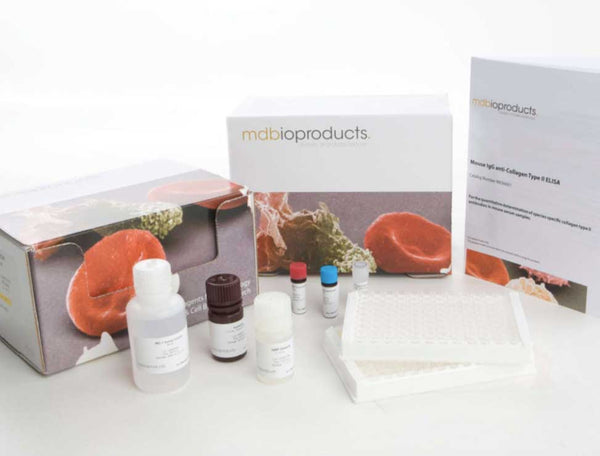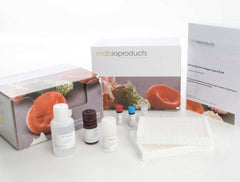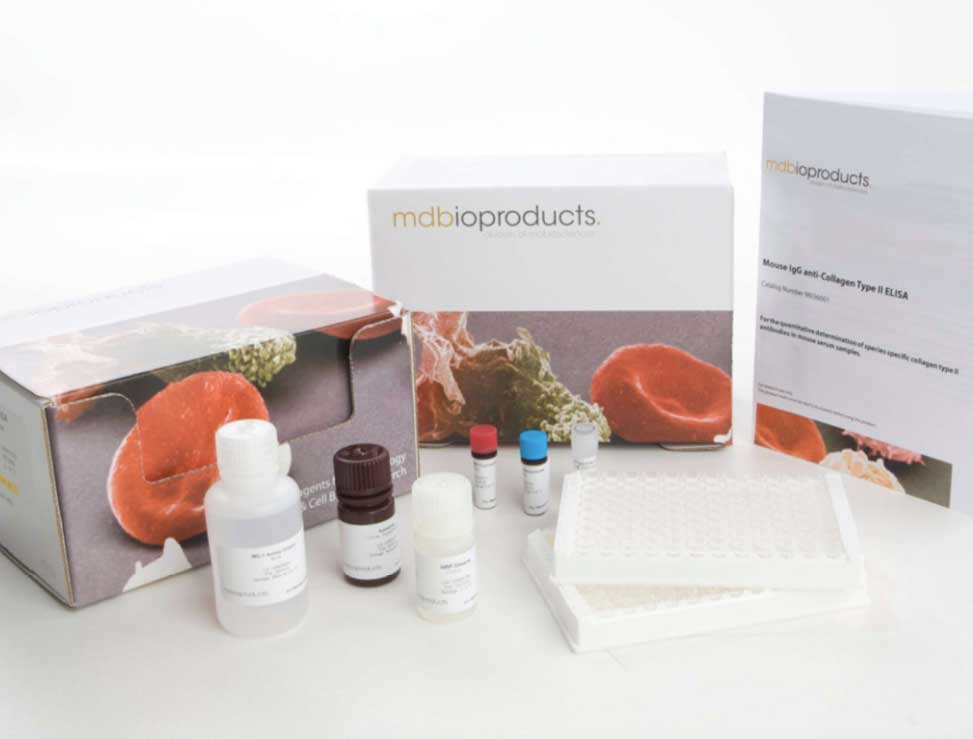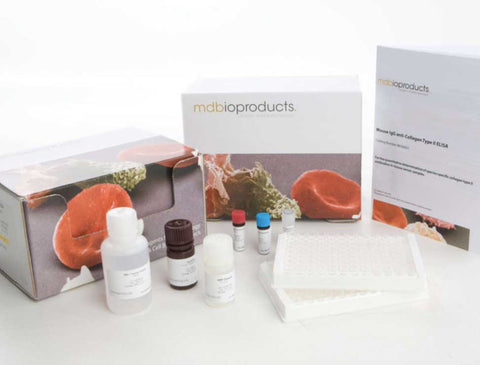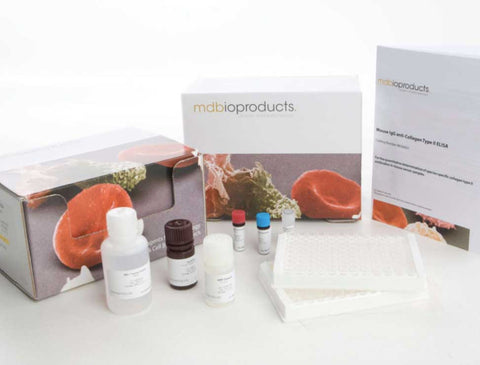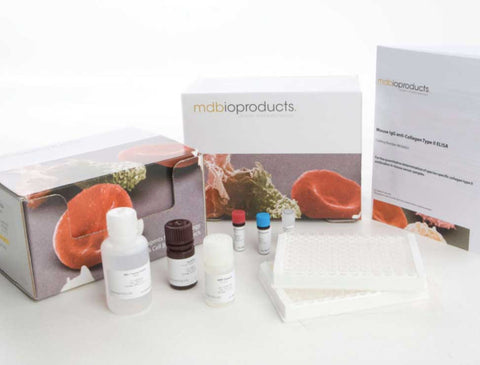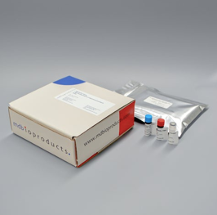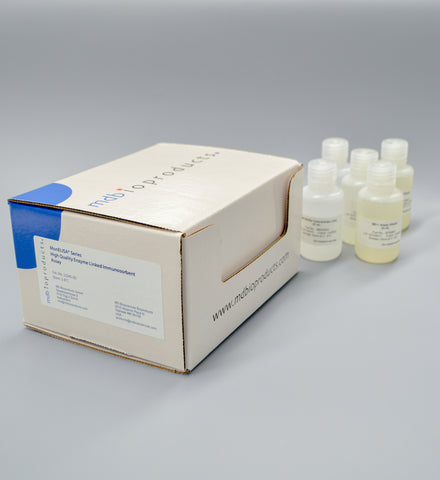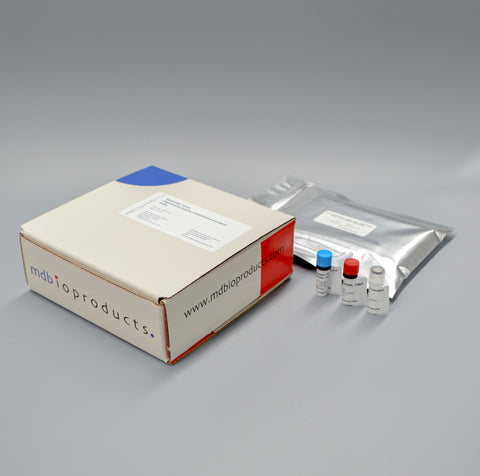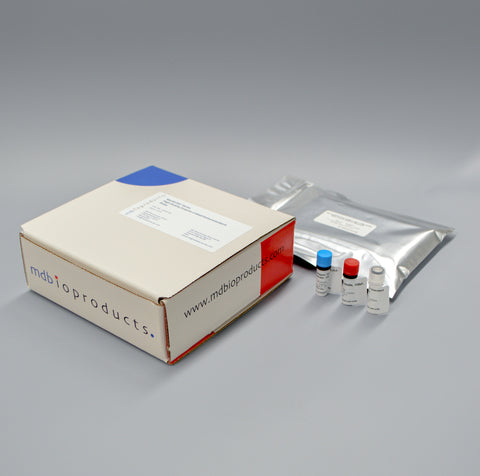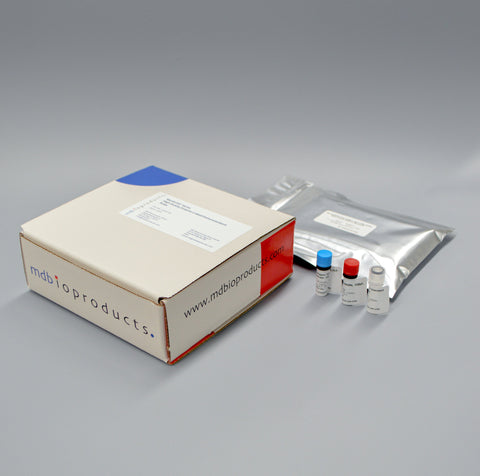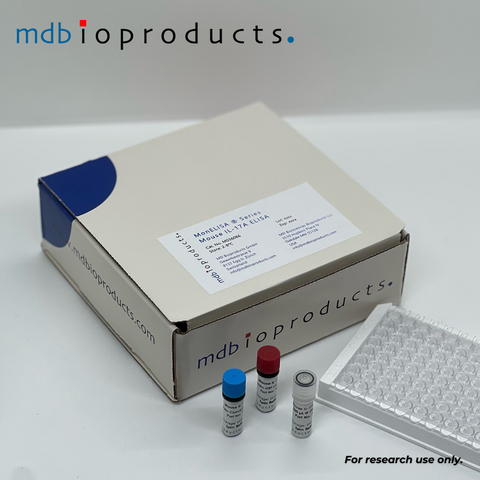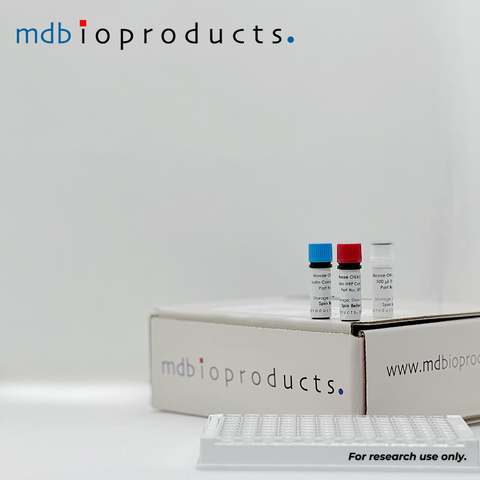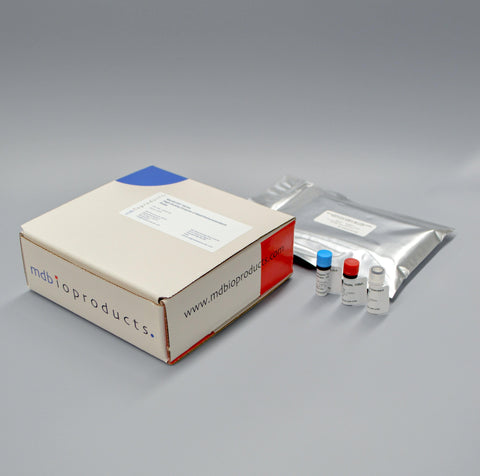Intact PTH ELISA
The PTH ELISA kit is intended to measure Intact PTH levels in human serum and plasma samples. Assay time is 3. 5 hours. PTH (Parathyroid hormone, Parathormone, Parathyrin) is biosynthesized...
ELISA
M046016
The PTH ELISA kit is intended to measure Intact PTH levels in human serum and plasma samples. Assay time is 3. 5 hours.
PTH (Parathyroid hormone, Parathormone, Parathyrin) is biosynthesized in the parathyroid gland as a pre-proparathyroid hormone, a larger molecular precursor consisting of 115 amino acids. Following sequential intracellular cleavage of a 25-amino acid sequence, preproparathyroid hormone is converted to an intermediate, a 90-amino acid polypetide, proparathyroid hormone. With additional proteolytic modification, proparathyroid hormone is then converted to parathyroid hormone, an 84 amino acid polypeptide. In healthy individuals, regulation of parathyroid hormone secretion normally occurs via a negative feedback action of serum calcium on the parathyroid glands. Intact PTH is biologically active and clears very rapidly from the circulation with a half-life of less than four minutes. PTH undergoes proteolysis in the parathyroid glands, but mostly peripherally, particularly in the liver but also in the kidneys and bone, to give N-terminal fragments and longer lived C-terminal and midregion fragments. In subjects with renal insufficiency, C-terminal and midregion PTH assays typically give elevated PTH results, as reflected by impaired renal clearance.
References/Citations:
Bauer, J. M., Mikušová, L., Verlaan, S., Bautmans, I., Brandt, K., Donini, L. M., ... & Luiking, Y. (2020). Safety and tolerability of 6-month supplementation with a vitamin D, calcium and leucine-enriched whey protein medical nutrition drink in sarcopenic older adults. Aging Clinical and Experimental Research, 1-14.
Cashman, K. D., Kenny, S., Kerry, J. P., Leenhardt, F., & Arendt, E. K. (2019). ‘Low-salt’bread as an important component of a pragmatic reduced-salt diet for lowering blood pressure in adults with elevated blood pressure. Nutrients, 11(8), 1725.
Jennings, A., Cashman, K. D., Gillings, R., Cassidy, A., Tang, J., Fraser, W., ... & Pietruszka, B. (2018). A Mediterranean-like dietary pattern with vitamin D3 (10 µg/d) supplements reduced the rate of bone loss in older Europeans with osteoporosis at baseline: results of a 1-y randomized controlled trial. The American journal of clinical nutrition, 108(3), 633-640.
O'Callaghan, K. M., Hennessy, Á., Hull, G. L., Healy, K., Ritz, C., Kenny, L. C., ... & Kiely, M. E. (2018). Estimation of the maternal vitamin D intake that maintains circulating 25-hydroxyvitamin D in late gestation at a concentration sufficient to keep umbilical cord sera≥ 25–30 nmol/L: a dose-response, double-blind, randomized placebo-controlled trial in pregnant women at northern latitude. The American journal of clinical nutrition.
Hemmingway, A., Kenny, L. C., Malvisi, L., & Kiely, M. E. (2018). Exploring the concept of functional vitamin D deficiency in pregnancy: impact of the interaction between 25-hydroxyvitamin D and parathyroid hormone on perinatal outcomes. The American journal of clinical nutrition, 108(4), 821-829.
Carson, E. L., Pourshahidi, L. K., Madigan, S. M., Baldrick, F. R., Kelly, M. G., Laird, E., ... & Mulhern, M. S. (2018). Vitamin D status is associated with muscle strength and quality of life in patients with COPD: a seasonal prospective observation study. International journal of chronic obstructive pulmonary disease, 13, 2613.
Hayes, A., Duffy, S., O’Grady, M., Jakobsen, J., Galvin, K., Teahan-Dillon, J., ... & Seamans, K. M. (2016). Vitamin D–enhanced eggs are protective of wintertime serum 25-hydroxyvitamin D in a randomized controlled trial of adults, 2. The American journal of clinical nutrition, 104(3), 629-637.
O'Donovan, C. B., Walsh, M. C., Nugent, A. P., McNulty, B., Walton, J., Flynn, A., & Brennan, L. (2015). Use of metabotyping for the delivery of personalised nutrition. Molecular nutrition & food research, 59(3), 377-385.
Cashman, K. D., Hayes, A., O'Donovan, S. M., Zhang, J. Y., Kinsella, M., Galvin, K., ... & Seamans, K. M. (2014). Dietary calcium does not interact with vitamin D3 in terms of determining the response and catabolism of serum 25-hydroxyvitamin D during winter in older adults. The American journal of clinical nutrition, 99(6), 1414-1423.
Wang, J., Trentham-Dietz, A., Hemming, J. D., Hedman, C. J., & Sprague, B. L. (2013). Serum factors and clinical characteristics associated with serum E-Screen activity. Cancer Epidemiology Biomarkers & Prevention, 22(5), 962-971.
Muldowney, S., Lucey, A. J., Hill, T. R., Seamans, K. M., Taylor, N., Wallace, J. M., ... & Kiely, M. (2012). Incremental cholecalciferol supplementation up to 15 μg/d throughout winter at 51–55 N has no effect on biomarkers of cardiovascular risk in healthy young and older adults. The Journal of nutrition, 142(8), 1519-1525.
Birmingham, D. J., Hebert, L. A., Song, H., Noonan, W. T., Rovin, B. H., Nagaraja, H. N., & Yu, C. Y. (2012). Evidence that abnormally large seasonal declines in vitamin D status may trigger SLE flare in non-African Americans. Lupus, 21(8), 855-864.
Cashman, K. D., Seamans, K. M., Lucey, A. J., Stöcklin, E., Weber, P., Kiely, M., & Hill, T. R. (2012). Relative effectiveness of oral 25-hydroxyvitamin D3 and vitamin D3 in raising wintertime serum 25-hydroxyvitamin D in older adults. The American journal of clinical nutrition, 95(6), 1350-1356.
Hill, T. R., Cotter, A. A., Mitchell, S., Boreham, C. A., Dubitzky, W., Murray, L., ... & Cashman, K. D. (2010). Vitamin D status and parathyroid hormone relationship in adolescents and its association with bone health parameters: analysis of the Northern Ireland Young Heart’s Project. Osteoporosis international, 21(4), 695-700.
Seamans, K. M., Hill, T. R., Wallace, J. M., Horigan, G., Lucey, A. J., Barnes, M. S., ... & Cashman, K. D. (2010). Cholecalciferol supplementation throughout winter does not affect markers of bone turnover in healthy young and elderly adults. The Journal of nutrition, 140(3), 454-460.
Cholecalciferol Supplementation throughout Winter Does Not Affect Markers of Bone Turnover in Healthy Young and Elderly Adults
Kelly M. Seamans, et al., J. Nutr., Mar 2010; 140: 454 - 460.Estimation of the dietary requirement for vitamin D in free-living adults 64 y of age
Kevin D Cashman et al., Am. J. Clinical Nutrition, May 2009; 89: 1366 - 1374.Estimation of the dietary requirement for vitamin D in healthy adults
Kevin D Cashman et al., Am. J. Clinical Nutrition, Dec 2008; 88: 1535 - 1542.Low vitamin D status adversely affects bone health parameters in adolescents
Kevin D Cashman et al., Am. J. Clinical Nutrition, Apr 2008; 87: 1039 - 1044.
Product Insert (PDF) - Informational use only. Please refer to insert included with product.
Data/Specifications:
- Species: human
- Sample Type: serum, plasma
- Sample Size: 25uL
- Standard Curve Range: 7 - 700 pg/mL
- Sensitivity: 0.9 pg/mL
- Assay Length: 3.5 hrs

